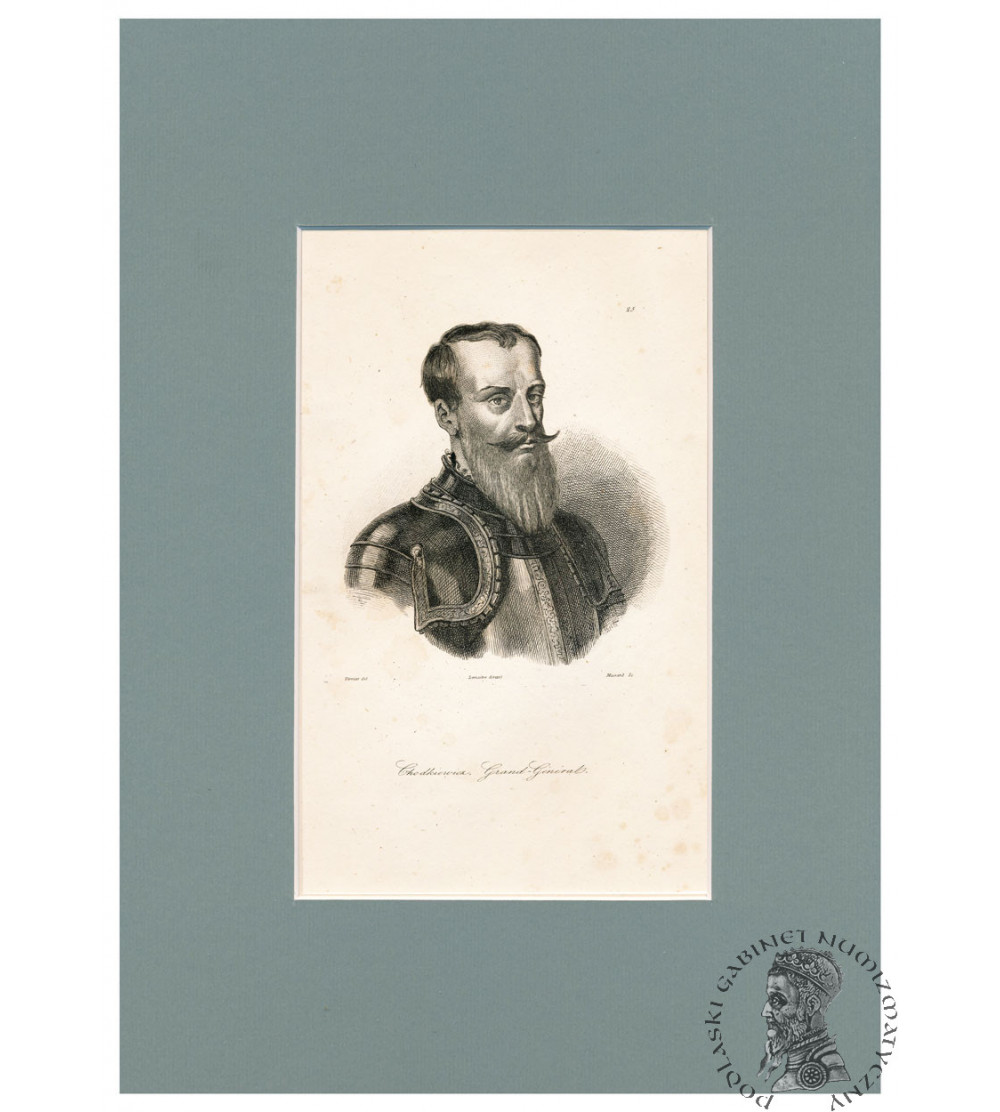




Jan Karol Chodkiewicz, Great Hetman of Lithuania, portrait, steel engraving 19th century, Engraving from the work "L'Univers Pittoresque - La Pologne" by Ch. Foster, Paris 1840, all A4 format (passe-partout), image dimensions 11 cm x 18 cm, good condition, small spots in places.
Jan Karol Chodkiewicz (1570/1571-1621) - military commander, field hetman of Lithuania. The year 1560 is usually given as the date of his birth, but Prof. Marian Chadaj has shown that he was born in 1570 or 1571. The son of a magnate, he was fascinated by the military from an early age. He was educated in Italy, where he learned the ways of battle used in Western Europe. After returning to Poland, he continued his education, practicing and fighting under Stanislaw Zolkiewski, Jan Zamoyski and Krzysztof Radziwill. In 1602 he took command of the Republic's forces in Inflants. He quickly gained the respect of his subordinate soldiers. He was known for his extraordinary oratorical skills. He became famous for his victories in battles fought against overwhelming enemy forces. The opponents were afraid of the Polish hussars and were unable to put up effective resistance during the charge, and Chodkiewicz took advantage of this fact, deftly outmaneuvering the enemy troops and gaining a crushing advantage. Hence the spectacular victories, such as the relief at Rakvere Castle (1603), the Battle of White Stone (1604, now Paide in Estonia), and the Battle of Kircholm (1605). The latter ranks among the greatest tactical victories in history. In 1609, Chodkiewicz seized Riga, using ships captured earlier at Parnavė. It was the only battle ever fought by the hetman on water. Soon the conflict in Inflants quieted down, and Khodkevich agreed to move to the eastern front, where he took up arms against troops from Moscow. In 1612 he suffered his first defeat - he failed to reach the Polish garrison in the Kremlin, where he was supposed to deliver food. In 1618 he stormed Moscow - he was unsuccessful, but as a consequence of the fighting the Divlin Truce was signed. The ailing Khodkevich hoped for a rest from eternal militancy, but soon had to return to the front to defend the country against the invading army of Sultan Osman II. The Poles took up positions in camp near Chocim in 1621. The Hetman managed to fend off the Turkish onslaught, but did not live to see the signing of the peace treaty - on September 23 he handed over the mace to regimental officer Stanislaw Lubomirski, uttered the words In manus tuas Domine (In your hands, Lord) and died. Source: ciekawostkihistoryczne.pl